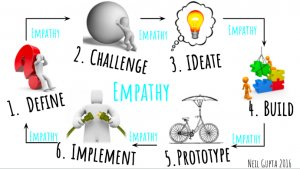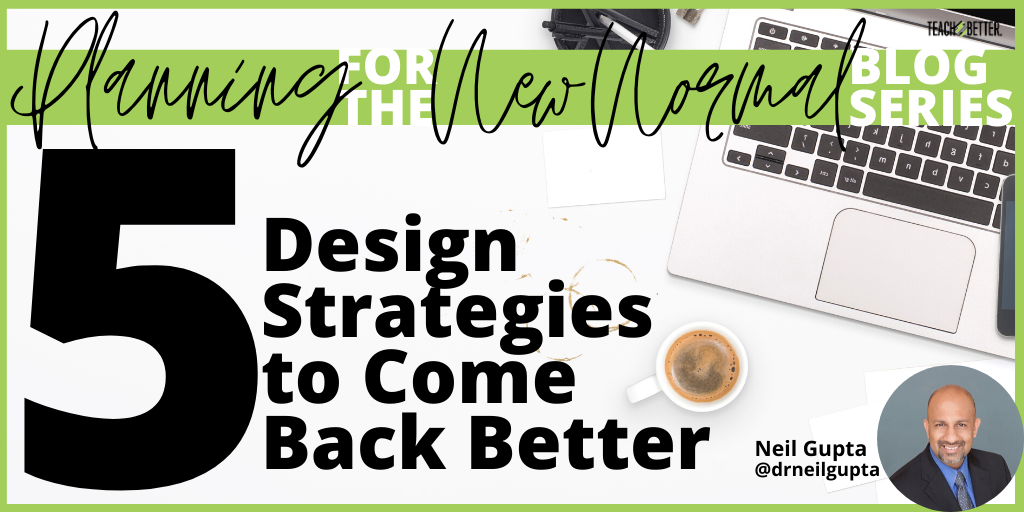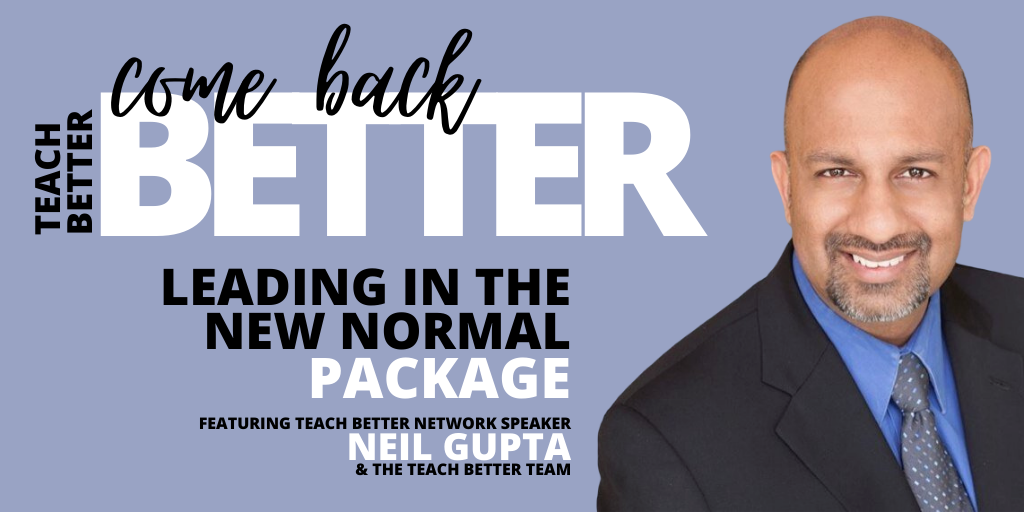TL;DR:
- Qualities of a design thinking mindset.
- Five strategies to Come Back Better this fall, including engaging with empathy, defining needs, challenging the process, innovating, and being flexible.
Seven years ago, a group of high school students participated in a design competition, building a robot to perform various jobs. Each week, they sent programming code to a company design firm for testing against other teams across the nation. Week by week, our team advanced to the next round of the competition, avoiding elimination.
During the week of the final round, representatives from the sponsoring company visited the remaining teams to observe their work. It was a combination of elation and nerves to perform in front of the company leaders.
After the performed activity, the students were sent back to class, and the school leaders met with the company leaders to debrief. The company leaders informed us that our team was the only high school team registered in the competition. The rest were from colleges! This came as a shock to us after unknowingly competing against hundreds of college teams for eight weeks.
Come Back Better Without Excuses
Without that information, we were already proud of our team. We wondered what would have happened had the team known that they were the only high school team in the competition. Would they have given up at the first signs of frustration with the excuse that they weren’t even supposed to be there in the first place?
Yet, in not knowing their competition, they were able to focus on the goal. And, by doing that, they weren’t able to even conceive excuses to give up.
As teams, it's important to know facts and information in order to do our work; it's also important to not allow information to deter us from our true abilities and capacity to persevere. Click To TweetCome Back Better Mindset
As teams, it’s important to know facts and information in order to do our work; it’s also important to not allow information to deter us from our true abilities and capacity to persevere.
The environment and mindset to a team is important to stretch beyond what we believe is possible. Too often, we begin with the constraints and keep ourselves contained under a bar for fear of messing up, loss, or even scrutiny.
 As we come back better this fall, leaders need to begin creating a mindset that extends beyond “the way we’ve always done it”. This example of reaching beyond what a team thinks possible is part of holding a design thinking mindset.
As we come back better this fall, leaders need to begin creating a mindset that extends beyond “the way we’ve always done it”. This example of reaching beyond what a team thinks possible is part of holding a design thinking mindset.
Design Thinking is “a human-centered approach to innovation that draws from the designer’s toolkit to define the need, challenge the process, ideate, build, prototype, and implement a system for success.”
5 Strategies to Come Back Better
As we Come Back Better this fall, navigating the logistics of how we will see our students, teach, assess, grade, feed, and connect with our students are all challenges we will need to face. Without a clear path to answers, a school team will need to be flexible and adaptable to change with a mindset of these design thinking principles.
Before you begin planning, challenge your team’s mindset with these “5 Design Strategies to Come Back Better”.
1. Engage with Empathy.
Regardless of what needs to happen, it is crucial to engage with empathy. This can help you understand how decisions will be received and impact staff, parents, students, and the community. Too often, decisions are made in the best interest of a single group or with assumptions in knowing the impact of others, without really spending the time to find out.
Create systems to gather input, feedback, and advice from various groups. Then, consider the impact on multiple subgroups within each one and throughout the process. For example, consider the impact from an equity standpoint by thinking about and engaging the special education, English Limited, and low socioeconomic subgroups.
2. Define the Needs.
Don’t rush to truly understand what your needs are. Ensure clarity among your team in what everything means. Too often, we get caught up in going straight to the work only to find frustration of not understanding the goal, the parameters, and the workflow. If you invest time to ensure clarity at the beginning, it will minimize frustration and confusion later.
3. Challenge the Process.
Allow time and space to challenge thinking, assumptions, and beliefs. Sometimes, questions are perceived as negative. Foster the questioning process with question stems, such as “How might we…” or “What if…”. Pause to allow team members to share their hopes, fears, and dreams, in order to elicit insight. And, encourage collegial dialogue to push past the way things are usually done.
4. Ideate for Innovation.
Establish challenges for teams to (co-)create in the development of solutions. Bring people from different points of view, including cooks, custodians, bus drivers, parents, teachers, principals, administrative assistants, and even students. You can provide different mindsets by having them approach situations from a perspectives of different fields, such as Tesla, Amazon, Google, Netflix, Apple, AirBnB, or Uber.
5. Prototype for Success.
Many times, we establish plans and then implement. It can help to break up your timelines to incorporate small pilots or prototypes to test initiatives. Then, you can give yourselves and the team time and space to reflect, review, gather feedback, and improve the initiative as it scales up. Don’t lock yourself into a plan that can’t be changed by fostering the spirit and attitude of flexibility.
[scroll down to keep reading]Come Back Better Than What You Think Is Possible
The high school team won the national competition, by the way. School leaders decided not to tell the students they were the only high school team until after the competition was over because they didn’t want to inhibit the students from rising to the occasion.
It wasn’t about holding information to manipulate the students. It was about allowing them the freedom to experiment without constraints. As you plan to Come Back Better, remember these strategies to continue to build mindsets with your team to push beyond what is possible.
ABOUT NEIL GUPTA
Dr. Neil Gupta has served as a teacher, building administrator, and district-level administrator for over 20 years. Neil has presented at the state, national, and international level in the areas of leadership and coaching. Dr. Gupta has a passion for coaching leaders and working with teams employing effective strategies. Dr. Gupta is also a member of the Teach Better Speakers Network.




